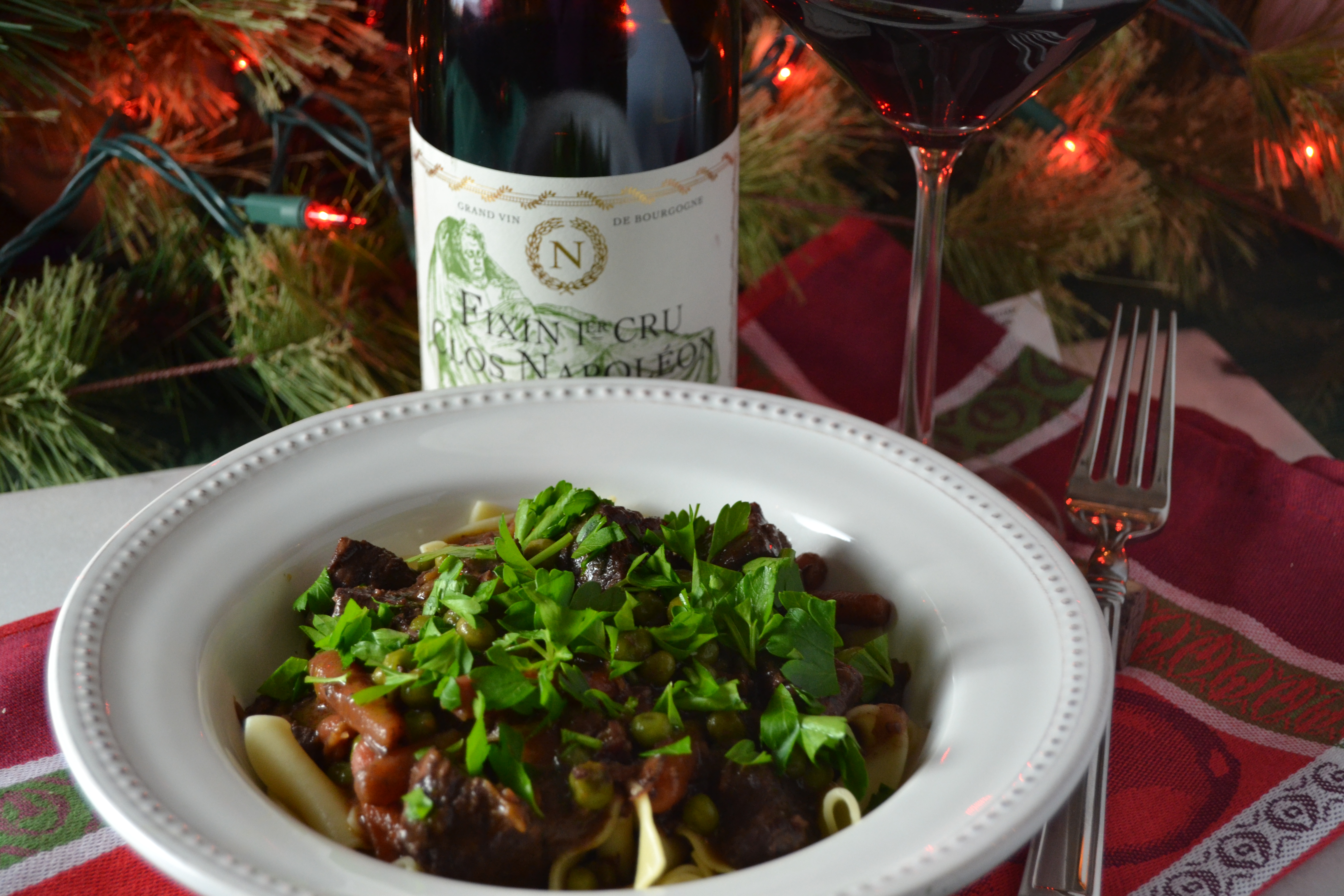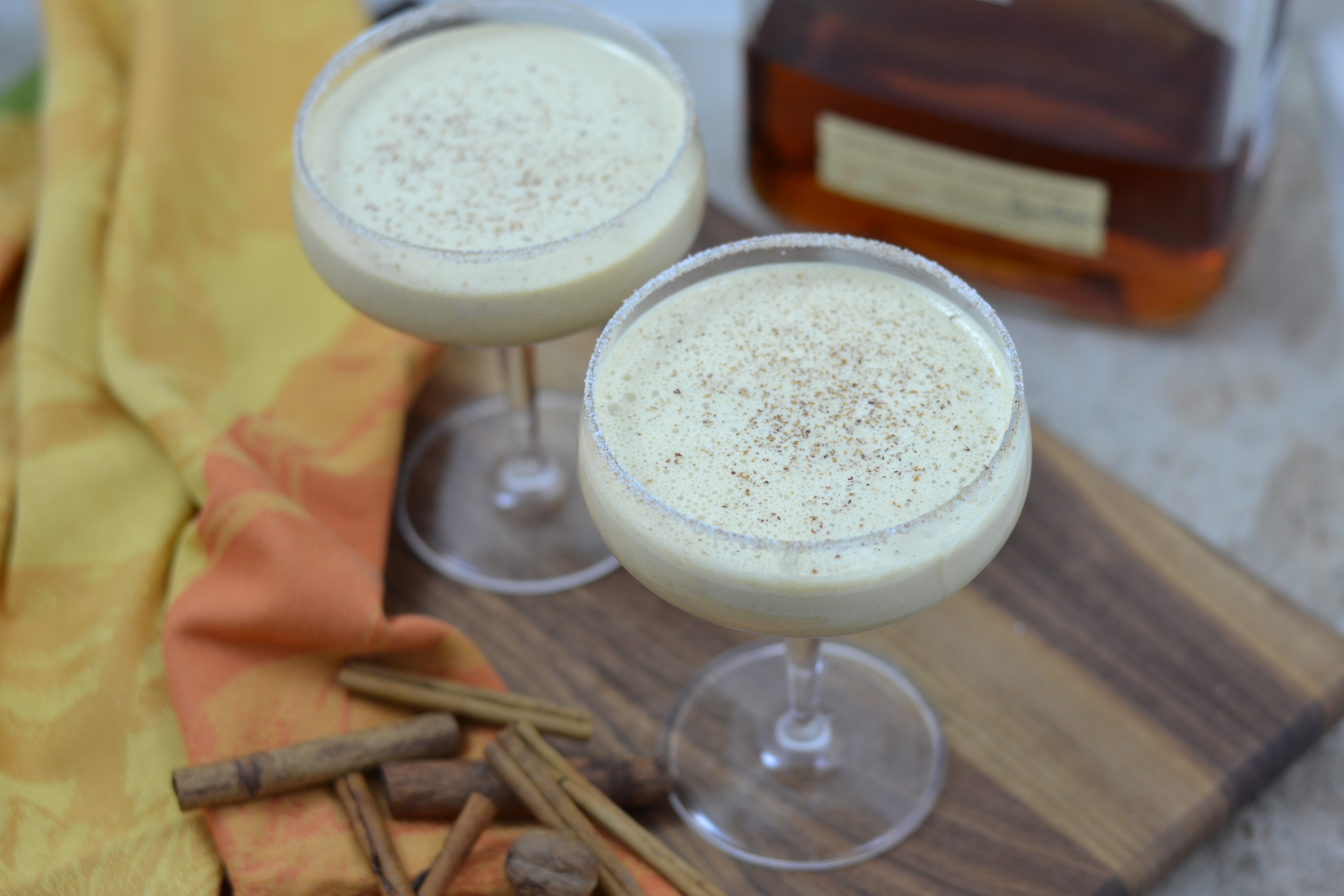“Nothing makes the future look so rosy as to contemplate it through a glass of Chambertin.” – Napoléon Bonaparte
Napoléon was an odd little tyrant who apparently loved Burgundy wine, Chambertin to be specific. Chambertin has a rich ruby color, so his reference to “rosy” undoubtedly arose from his habit of diluting this magnificent Grand Cru with water for his daily consumption, an act that surely brought a tear to the eye of his sommelier. But Napoléon is long gone and so too the dilution of a Grand Cru before drinking, so it is time to move forward and discover the joys of Burgundy extant.

This month the French Winophiles are virtually touring Burgundy through glass and plate. In Burgundy reside some of the world’s best wines and many of its most expensive. It is the home of pinot noir and chardonnay grapes whose expression from its terrior results in wines that are known for their minerality, elegance, and sophistication. Surprisingly, Burgundy is primarily a white wine producing region – 61% of the production is white wine, 31% red wine, and 8% sparkling wine. Its top wines have an ethereal, almost mystical eminence. Their presence on a wine list brings pangs of desire to the connoisseur and an imminent deflation to his or her bank account. Grown men and women have been known to weep just thinking about that sip of Montrachet at a gourmet wine event. And hardly a day goes by when Sous Chef does not lament having to “liquidate” his mixed case of 1982 Domaine de la Romanée-Conti at auction in 2000.

James Michener would begin describing Burgundy by saying that about 200 million years ago it was part of a vast, tropical sea which created limestone soils that have given its wine a unique sense of minerality. The Romans knew a good thing when they started winemaking in the region in the 1st century CE, but as in many things alcoholic it was the Catholic monks in the 11th century CE that really developed the vineyards and winemaking in the region. After the French Revolution, the land was returned to the proletariat which is why the region is divided into so many small plots. In fact, by 2013 there were 3,949 winegrowing estates, 300 Maisons de Negoces, and 19 Cooperative Cellars in the region.
Burgundy consists of five principal growing areas, starting with Chablis in the north around Dijon and ending with Mãconnais in the south around Macon, with Côte Chalonnaise just below the incredible Côte d’Or, home of the truly great wines from Côte de Nuits (Gevrey-Chambertin, Vosnee Romanée, et. al.) and Côte de Beaune (Puligney-Montrachet, Chassagne-Montrachet, Meursault, Pommard, et. al.).There are over 100 appellations (approved wine growing areas) in Burgundy and these are divided into four levels of “quality:” Grand Cru (or 1er), Premier Cru, Village Wines, and Regional Wines. The terminology and use of these classifications is somewhat intuitive as the bottle will clearly indicate if a wine is a Grand Cru (an apex wine), Premier Cru (a wine from special vineyard areas within a village), Village Wines (named after a town near where the wine is sourced), and regional wines (the lowest classification which is generically labelled “Bourgogne Red” or “Bourgogne White” as the grapes can be grown anywhere in Burgundy).

Quality Burgundy wines are not inexpensive, and I have been hoarding wines from Heritage Fine Wines and K&L Wines for the past year for just the right occasion. This month I selected a 2012 Pierre Gelin Fixin (pronounced “Fissin”) 1er Cru “Clos Napoléon” from K & L Wines. This wine retails for $59.99. Allen Meadows from “Burghound” rates this wine 90. This is 100% Pinot Noir with ABV 13.5%. On the nose it has hints of strawberry, light spice and a little pepper. It has earthy minerality, with soap and saddlewood notes. Smooth and balanced. The wines are made using traditional methods. They are aged in oak barrels from 20-22 months. The Fixin vineyards are situated in Côte de Nuits between Marsannay and Gevry-Chambertin.
The Pierre Gelin website recommended pairing this wine with a classic beef stew. El Niño has blessed us with some cool winter days, so I paired this wine with Beef Bourgogne. I slightly adapted a recipe from Paul Bocuse from his cookbook Bocuse in Your Kitchen by adding peas to the braised meat, red wine, carrots, pearl onions, and herbs and serving it over egg noodles. This is hands down the best Beef Bourgogne that I have ever had. It makes a delicious one-dish hearty meal and that is even better perhaps the next day. The spice and pepper of the 2012 Pierre Gelin Fixin 1er Cru “Clos Napoléon” paired beautifully with this dish.

See What Burgundy Wonders the #Winophiles are Sharing
- Lyn from BinNotes shares “Meet The Formidable Mdm. Anne Parent of D. Parent’ from Pommard”
- Wendy from A Day in the Life on the Farm shares “Vol au Vent served with a 2014 Chablis”
- Christy from Confessions of a Culinary Diva shares “Classic Burgundy”
- Jill from l’Occasion shares “Risotto with Forest Mushrooms & Shallots, a Meatless Match for Aegerter Les Enfants Terribles”
- David from Cooking Chat shares “Pouilly-Fuissé with Goat Cheese Pasta and Chicken”
- Camilla from Culinary Adventures with Camilla shares “Cod Grenobloise + a Louis Jadot Chardonnay”
- Michelle from Rockin Red Blog shares “Burgundy: A Taste of Terroir”
- Martin from ENOFYLZ Wine Blog shares “A Taste of Burgundy”
- Jeff from Food Wine Click! shares “A Virtual Visit with Burgundy Friends”
Special thank-you to Jeff from Food Wine Click for hosting our virtual tour this month. Make sure to join us February 20th when we visit Alsace. In March we will be looping back into the Loire Valley – more details to come.
Join us Saturday, January 16th at 8 amPST/11 am EST for a live Twitter Chat using #Winophiles.
- 2½ pounds stew meat (beef blade, chuck roast meet) cut into 1 inch chunks, seasoned with salt & pepper
- ¼ pound (approximately 4 slices) bacon sliced into ½ inch pieces
- 4 tablespoons butter
- 24 baby pearl onions
- 1 bag frozen peas
- 1 - 12 /12 ounce bag petite carrots
- Bouquet Garni
- 3 stalks celery with leaves attached
- 4 fresh thyme stalks
- 1 bay leaf
- 1½ tablespoons flour
- 1 generous teaspoon tomato paste
- 1 bottle red wine - preferably Burgundy
- 2 small garlic cloves peeled and crushed
- egg noodles - cooked according to package instructions
- fresh parsley for garnish
- Melt the butter into a large Dutch-oven. Add the onions and bacon and cook over moderate heat for 3 minutes or until they begin to soften and brown. Add seasoned meat to the pot and brown all sides over high heat. Lower the heat and add the carrots, bouquet garni, celery stalks, thyme, and bay leaf, cover and simmer for 20 minutes. Remove meat and bacon to your best ability and set aside. Stir the flour into the pot and heat until it starts to color. Add the tomato paste, and then add the wine little by little, stirring constantly. Add salt, pepper, garlic and stir. Bring to a boil stirring constantly. Return the beef and bacon back to the pot, cover and simmer for 2 hours. Add the peas and cook for ½ hour more for a total cooking time of 2½ hours.
- To serve, remove Bouquet Garni, celery stalks, bay leaf, thyme stalks. Serve over warm bed of egg noodles. Garnish with fresh parsley.





Great minds think alike (or perhaps just purchase from K&L) I see you also had a Premier Cru from Fixin. I really enjoyed mine! Wonderful post and I know it worked with your dish!
A classic pairing indeed.Both the wine and food look fantastic! I love that you called Napoleon an “odd little tyrant.” That is hysterical! And true! BTW, I disagree with your word hording, in the wine world we call buying tons of wine and not drinking it for years “cellaring” Its sophisticated! 🙂
I was so tempted to do this classic pairing but in the end the vol au vent won out.
I love the virtual tour and I am looking forward to Alsace!
Tonight might be the perfect evening for this pairing…. hmmm, I’ll have to beg my husband to create it. I’ll buy the wine!